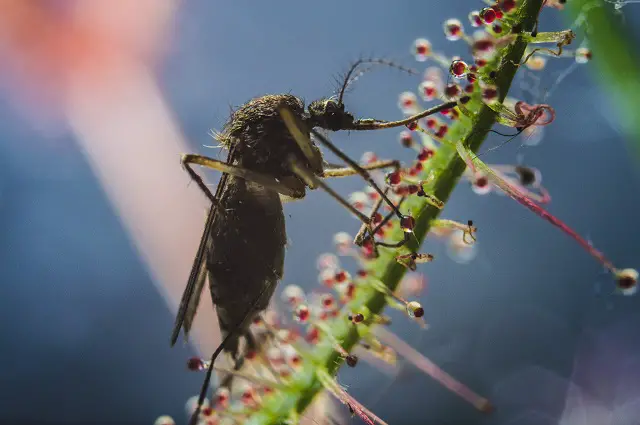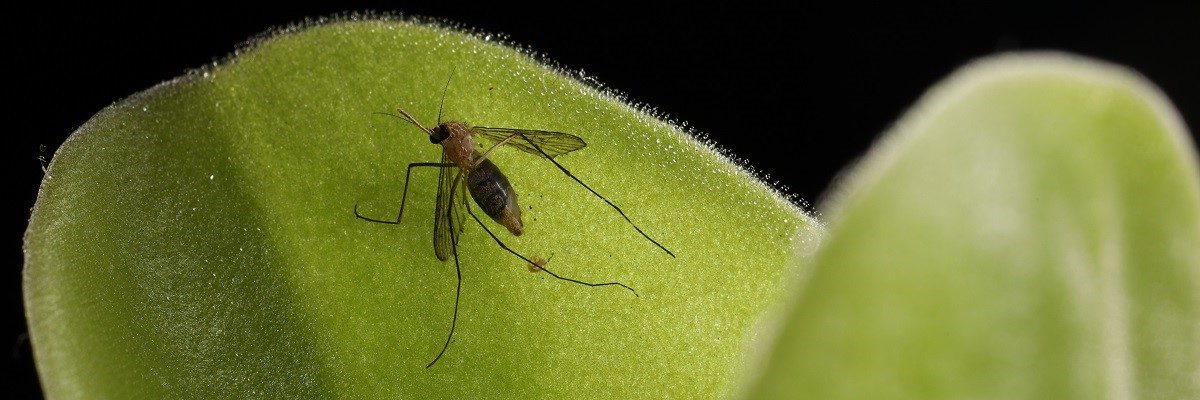Yes, they can eat mosquitoes. The bite of mosquitoes is annoying, despite their size. These little bugs are a nuisance that can make enjoying time outdoors difficult in peak seasons. The bites of these insects not only cause days or even weeks of itchy discomfort, but they can also transmit diseases like Malaria and Zika by transmitting the blood of hosts to other hosts. The following carnivorous plants eat mosquitoes as part of the insect diet.
| Pitcher Plant | Drosera |
| Venus Fly Trap | Butterworts |
Carnivorous Plants Ineffective Mosquito Control
Carnivorous plants cannot control backyard mosquito populations. Only male mosquitoes are consumed, which are not those that bite. Those who bite are the female mosquitoes; they feed on blood. Your carnivorous plants attract and feed on the harmless male mosquitoes that feed on nectar. Most carnivorous plants grow in standing water where mosquito larvae live. Certain carnivorous plants like the Venus Flytrap can only eat one insect at a time.
Don’t expect these plants to rid your backyard of mosquitoes, but enjoy them as anomalies in the garden. Let’s have a look at a few.
Pitcher Plant Eat Mosquitoes
Using pitfall traps, the Pitcher Plant captures insects using passive predatory mechanisms. Carnivorous adaptations enable them to thrive in nutrient-poor soil. Leaf pitfalls usually consist of long, tubular structures made of specially adapted leaves. The pitchers contain a series of nectar-secreting glands extending down the trap’s interior to attract prey.
The enzymes secreted by the plant digest and absorb their bodies after they are dead. The sugary secretions lead the bugs to the smooth opening at the top of the pitcher. The victims lose their footing at this point, falling into the liquid pool at the bottom of the pitfall and drowning.
One of the easiest carnivorous plants to grow is the North American pitcher plant (Sarracenia). Only 15 Sarracenia species and subspecies can be found naturally in North America. Tropical pitcher plants require cooler temperatures, moist substrates, and high humidity. When placed on a sunny patio, they can eat a lot of mosquitoes, wasps, moths, and houseflies since they thrive in full sunlight.
Drosera Eat Mosquitoes
A sundew (Drosera) catches insects in sticky leaf hairs, earning the nickname “flypaper.” They are among the most common carnivorous plants. A sundew is also one of the prettiest carnivorous plants and one of the easiest to grow indoors.
A sundew can help get rid of small bugs that cause problems indoors. They can often eat fungus gnats, fruit flies, and occasional flea. Mosquitoes and other flying insects can also be caught on the bigger sundews.
Despite not being able to solve an insect problem, sundews can serve as a warning system to let you know when things are getting out of hand.
If you decide to use a carnivorous plant for insect control, Drosera capensis as well as Drosera spatulata are both easy to come by, while not being that expensive and tolerant to a wide range of conditions.
They prefer bright light, need to be kept relatively moist, and otherwise need very little attention. Another plus is that they frequently flower and reproduce.

Venus Fly Trap Eat Mosquitoes
In addition to being a carnivorous plant, the Venus flytrap (also known as Dionaea) uses motion to catch its prey by snapping shut its two hinged lobes.
Sensitive hairs cover the insides of the wide, flat leaves of the plant. The trigger hairs on the plant’s leaves cause the leaves to close around the insect when it lands on them (attracted to the scent or color of the plant).
It is possible for Venus Fly Traps to grow to different sizes, making them effective at trapping many different insects, including mosquitoes!
Once it has a host in its clutches, the plant releases digestive enzymes to kill and liquefy the insect. The plant can then absorb nutrients from the insect soup. Some Venus Fly Traps have developed smaller ones that are sensitive to even tiny bugs since mosquitoes weigh too little to trigger the trigger hairs of larger traps.
Butterworts Eat Mosquitoes
Pinguicula is Latin for “little grease” and refers to their distinct buttery or greasy texture. In addition to growing in North America, Butterworts are found throughout the Northern Hemisphere, including Central and South America. Dozens of new species have been discovered in Mexico in the last twenty years, giving it a wide variety.
Butterwort is a small herbaceous plant that produces rosettes of flat leaves with upturned margins. Small, sticky hairs cover the leaf surface, attracting mosquitoes, gnats, fruit flies, and springtails. A fluid with enzymes and acids is secreted by sessile glands, destroying and dissolving prey quickly. After dissolving the prey, the plant absorbs the mineral-rich soup. A small bud forms on Butterworts in cold climates during winter. During the subtropical winter dry season, plants from Mexico become non-carnivorous succulents.
Conclusion
As long as their modest requirements are met, these plants are fascinating to both indoor and outdoor collections. Carnivorous plants have developed differently from most plants and will survive in seemingly terrible conditions, enjoying wet, sunny, and nutrient-poor spaces. You should only hydrate these plants with distilled water because tap water contains enough minerals to harm or even kill your carnivorous plants.


